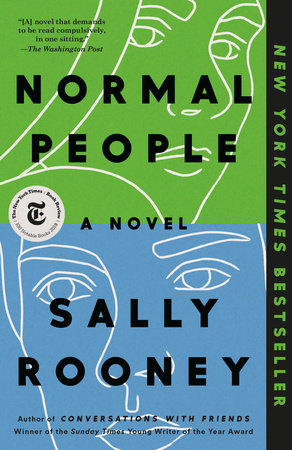Book Review: Normal People by Sally Rooney

“Just Talk!”
I wanted to scream, as the two normal people once more danced around their feelings, almost finding sincerity and understanding before turning away from each other again. It was like watching two pieces of dirt go down a gritty old bathtub drain: spinning around and around and around, always chasing each other, getting closer and closer together, but never quite meeting before they vanish from sight.
I am still vacillating on whether or not “normal people” was a misnomer. Is it normal for people for people to get higher education in Ireland? Maybe, I have seen some stats suggesting this. Is it normal for those people to be geniuses? To go to the top-rated university in Ireland? To be given “the most prestigious undergraduate award in the country”? Well chances are if something is noteworthy enough to get you on a Wikipedia page then you likely aren’t totally normal.
The above are relatively inhumane references for normality, i.e. eschewing anything related to human emotions when defining “normalcy” for humans not only majorly misses the point of this book – that these abnormal people are could be normal – but totally ignores the fact that there is more in common between people than their social strata. I think a better question I should ask is: normalizing (pun intended) for the obvious demographic variations between people, do the main characters in this book behave in a normal way”?
I am leaning towards “probably not, otherwise this book wouldn’t be very interesting”, but again I run into an issue defining what emotional normalcy is. It is probably possible to categorize a thing as being something that the average person would be upset/angered/overjoyed by, but at the incredible level of emotional nuance and complexity that Sally Rooney has went into in this book, it is impossible to compare any of the characters to some artificial, average person. You can tell when the average person will be happy. You can tell when the average person will be sad. You can’t tell how they will feel when they are asked by a friend/partner to participate in violent S&M (to take a rather extreme example from the book).
I am left with one option in my semantic soliloquy then: to say that in my experience even the most obtuse people would have talked about their feelings long before Connell and Marianne failed to for the 19th time, but also that I am sure that Salley Rooney drew heavily from her own experiences; if I met Salley Rooney in a campus coffee shop on a rainy day, eating lemon pastry rolls, drinking a black coffee (one sugar), and answering emails on her laptop, I would probably call her normal too.
Some stuff I couldn’t fit in to my review, which didn’t end up being so much a review as a short semantic essay:
By skipping ahead in the story, often by months at a time, Sally Rooney was able to spend her time emotionally supercharging little snippets of her character’s lives. Because of this tactic her book delves into emotional depths that most authors aren’t willing to go to – I presume for fear of writing 2000 page books.
I found most characters in this book one-dimensional, which was weird for such an emotional book. Rooney boiled her side characters down to one (often negative) personality trait, and then used this trait purely to make points about the main characters. Because of this, her side characters seemed almost like they weren’t real humans. I also think this happened to an extent with the main characters: we went so deep into Marianne and Connell’s complicated feelings towards each other, yet I somehow I ended the book thinking that the only personality they trait had was their stubborn lonely longing for each other. I think the only person with a traditional character arc in this book was the asshole-friend-turned-ok-guy Eric.
There was a section on money being a social construct which I felt was out of place, but which I now feel was the author espousing some of her personal political views in a rather on-the-nose way.
